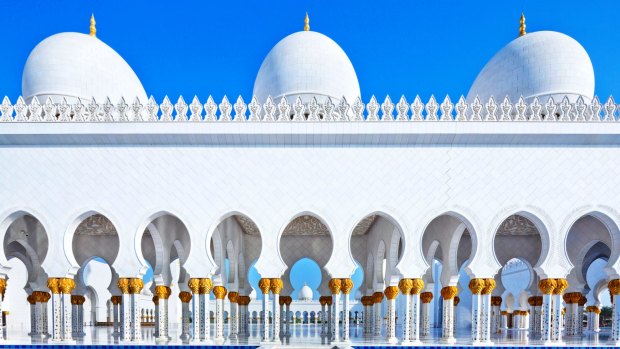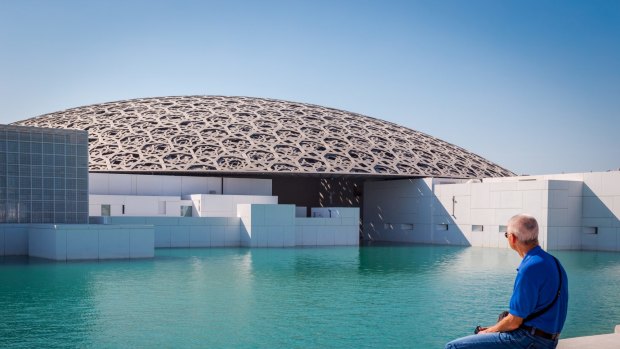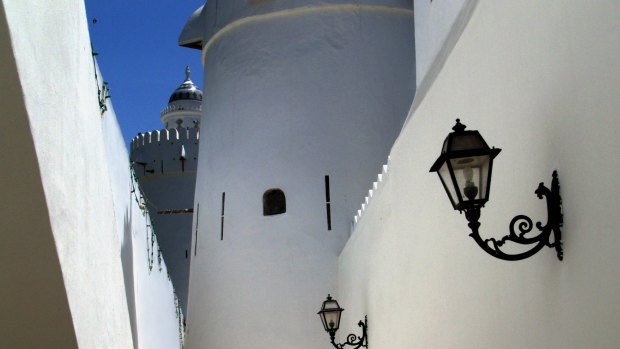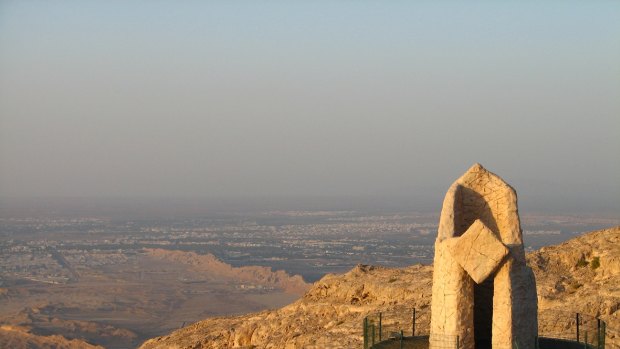By Mal Chenu

The Sheikh Zayed Grand Mosque is the third largest mosque in the world. Credit: Getty Images/iStockphoto
This is sponsored content for Abu Dhabi Tourism.
Beyond the magnificent hotels, thrilling theme parks and eclectic fine dining of this thoroughly modern city, Abu Dhabi is steeped in the traditions and hospitality of its Bedouin past. The proud Bedouin culture is a foundation stone of Emirati society and visitors can expect a warm welcome and a culturally rich hub of mystique, magic and superlatives.
The finest example of Abu Dhabi's marriage of tradition and contemporary excellence is the transcendent Sheikh Zayed Grand Mosque, a spiritual masterpiece as grand within as it is from a distance. The spectacular white marble mosque can cater to up to 40,000 worshippers at a time and its open-door policy means everyone is welcome. Imposing domes, columns, minarets and reflective pools and manicured gardens welcome approaching visitors. Inside, the spectacle is even more powerful with endless gold leaf inlays and precious stones, stunning calligraphy of verses from the Quran, enormous Swarovski crystal chandeliers and the world's biggest carpet, made partly from New Zealand wool and completed with more than two billion knots tied by hand. Guided tours reveal the architectural wonder in glorious detail. The mosque is even more ethereal at night when blue-grey clouds are projected onto the external walls.

The Louvre Abu Dhabi is part of a thirty-year agreement between the city of Abu Dhabi and the French government.Credit: Getty Images
The Zayed Centre in Al Bateen is a tribute to the late Sheikh Zayed bin Sultan Al Nahyan and includes a collection of his personal possessions. Sheikh Zayed is considered the Founding Father of the Emirates and wherever you see his name, you can expect an intriguing cultural experience. His desire - and directive - that the Emirates' oil wealth be used to blend the old with the new and to preserve traditional culture is evident throughout Abu Dhabi.
One such extraordinary and inspiring blending of cultures is at Louvre Abu Dhabi, which opened in 2017 to universal acclaim. Designed by Pritzker Prize–winning architect Jean Nouvel, the largest art museum on the Arabian Peninsula is another architectural tour de force, a geometric radiance of stunning white buildings in the Saadiyat Cultural District. In addition to works of the masters borrowed from the Louvre and other French museums, Louvre Abu Dhabi exhibits the finest Middle Eastern and Emirati art and artefacts.
Saadiyat Island is also home to the Salwa Zeidan Gallery at the St Regis Resort, which displays the paintings, photography, sculptures and performance art of emerging artists. Under construction are the Frank Gehry-designed Guggenheim Abu Dhabi and the centrepiece of the district, Zayed National Museum, both of which will add to the cultural riches here.

The Qasr al-Hosn, also known as the White Fort, is the oldest stone building in Abu Dhabi. Credit: Shutterstock.
Discover the origins and history of Emirati culture at the city's oldest building, Qasr Al Hosn in Khalidiyah, a watchtower and fort built in the 18th Century to protect a freshwater well. Later a royal residence, the permanent exhibit here tells the story of the city and its people. Abu Dhabi Heritage Village in the marina area is a reconstructed, walled village providing an insight into pre-oil era life in the UAE. Bedouin culture is revealed in the form of goat-hair tents, camel tending and artisans at work in the swordsmith, glass-blowing, tannery and pottery workshops. Exhibits featuring jewellery, pearling and irrigation, as well as a fort, a souq, a mosque and different styles of traditional housing complete the fascinating enclave.
Wherever you look in Abu Dhabi, you'll find distinctive - and often specialised - cultural spectacles. The Women's Handicraft Centre in Al Mushrif focuses on traditional crafts such as local dress, silver thread work and weaving. Pick up a handmade souvenir or have your hand decorated with a simple henna design. The Etihad Modern Art Gallery and the adjacent Etihad Antiques Gallery in Al Bateen are distinctly browse-worthy, while Miraj – the Museum showcases Islamic art and culture from around the world in the form of hand-woven carpets, jewellery, painting, calligraphy and antique gold. Replicas are available for purchase.
You should also find time to drive to Al Ain, 90 minutes from Abu Dhabi city. This is the largest inland city in the Emirates and home to UNESCO World Heritage-listed sites, the 1,240-metre-high limestone Jebel Hafeet mountain, a series of natural springs and oases, as well as forts, museums, a zoo and the famous Al Ain Camel Market.

Jebel Hafeet is a mountain located primarily in the environs of Al Ain and offers an impressive view over the city. Credit: Getty Images/iStockphoto
You'll run out of superlatives before you run out of things to see and do in Abu Dhabi. Turn your next layover into a stopover and take a few days to explore this spellbinding cultural melting pot.
To start your own Extraordinary Story in Abu Dhabi, head to visitabudhabi.ae
Sign up for the Traveller Deals newsletter
Get exclusive travel deals delivered straight to your inbox. Sign up now.